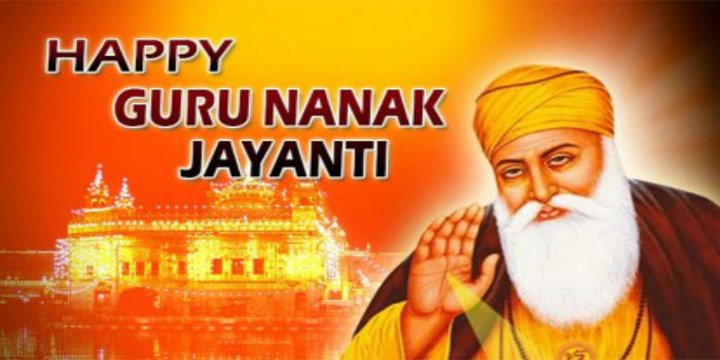Guru Nanak Jayanti: 5 things to know about Guru Nanak, the founder of Sikhism
Context- Guru Nanak Jayanti marks the birthday of the founder of Sikhism and the first of its nine gurus, Guru Nanak or Baba Nanak. Sikhs celebrate this day with a procession called Nagar Kirtan, which sees groups of people sing hymns and visit gurudwaras.
(Credits- xaam.in)
Nanak’s teachings laid the ground for the emergence of a distinct faith. Among his followers were both lower-caste Hindus and Muslim peasants.
1. Born in a Hindu family, he became interested in questions of philosophy early on.
- Nanak was born on April 15, 1469, in a Hindu family in the city of Nankana Sahib, which is part of Pakistan today. Since an early age, he is said to have harboured curiosity about philosophical questions – the meaning of life and religion. Following marriage at an early age and the birth of his children, he found himself returning to these enquiries.
- After working as an accountant for some time in Sultanpur, he joined a Muslim minstrel named Mardana, according to Khushwant Singh’s book A History of the Sikhs. Singh quoted janamsakhis, which are accounts of the guru’s lives based on oral traditions and some historical information.
2. At the age of 30, he had a spiritual experience.
- It was during one of these early morning ablutions by the river that Nanak had his first mystic experience, Singh wrote.
- “The janamsakhi describes it as communion with God, who gave him a cup of amrit (nectar) to drink and charged him with the mission in the following words:
- “Nanak, I am with thee. Through thee will my name be magnified. Whosoever follows thee, him will I save. Go into the world to pray and teach mankind how to pray. Be not sullied by the ways of the world. Let your life be one of praise of the Word (ntim), charity (dan), ablution (isniin), service (sevii), and prayer (simran). Nanak, I give thee My pledge. Let this be thy life’s mission.””
3. He travelled on foot to spread his message.
- Nanak is said to have travelled as far as Sri Lanka, Baghdad and central Asia to spread his teachings. His last journey was to Mecca and Madina, the holiest sites in Islam, and he visited sites revered in other religions, too. These journeys were called ‘udaasis’.
- He wore a combination of clothing styles associated with Hindu Sadhus and Muslim fakirs. The janamsakhis speak of the incidents that took place in the course of these journeys. Nanak also spoke with the local pandits, Sufi saints and other religious figures.
4. Nanak spoke to people across communities to preach the Oneness of God.
- In one such instance, Singh wrote of Nanak’s visit to Mecca. He was staying in a mosque and fell asleep with his feet towards the Kaba (a cube-shaped structure in Mecca that is considered holy). The act was considered of grave disrespect to the house of God.
- “When the mullah came to say his prayers, he shook Nanak rudely and said: “O servant of God, thou hast thy feet towards Kaba, the house of God; why hast thou done such a thing?” Nanak replied: “Then turn my feet towards some direction where there is no God nor the Kaba.’”
- Singh traces the word ‘Sikhs’, used for Nanak’s followers, to the Sanskrit words ‘sisya’ (meaning disciple) or ‘siksha’ (instruction or education) , also found in the Pali language as sikkhii.
5. How Nanak chose Guru Angad as the second Guru.
- Nanak spent the last years of his life in Kartarpur and his disciples followed a particular routine under him. They arose before sunrise, bathed in cold water and gathered in the temple to recite the morning prayer and sang hymns.
- Service or sewa was also carried out. It exists to date as a system where people contribute their labour and help the needy through acts such as cooking food for them at the gurudwaras (what is known as ‘langar’).
- One such disciple was named Lehna. As the Guru’s sons were not inclined towards spirituality, Nanak chose Lehna as the guru after him, giving him the name Angad (meaning ‘of my own limb’). He also had a sizeable following of his own.
Conclusion- Bhakti Movement arose in South India, particularly around areas of Tamil Nadu to reform Hindu Religion. It also contributed towards development of regional languages and literature.
Syllabus- GS-1; Bhakti and Sufi Movements
Source- Indian Express



